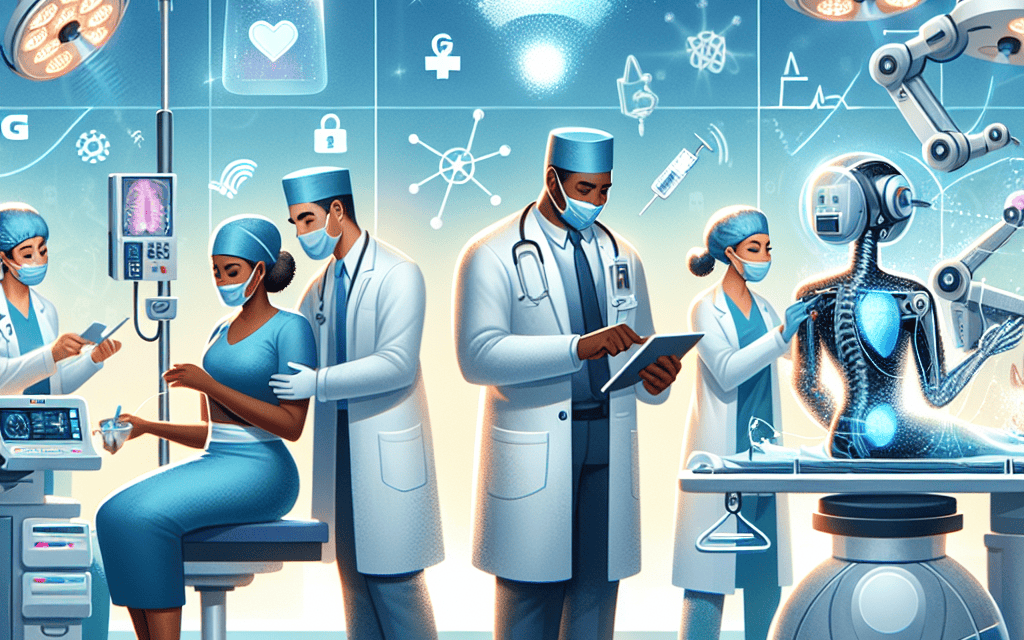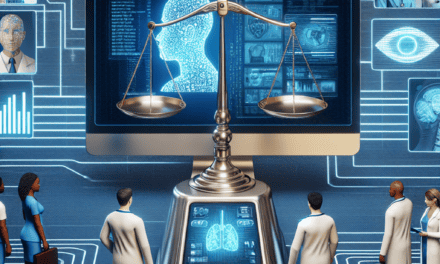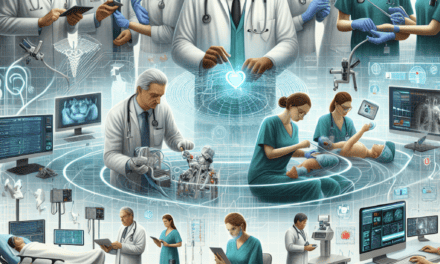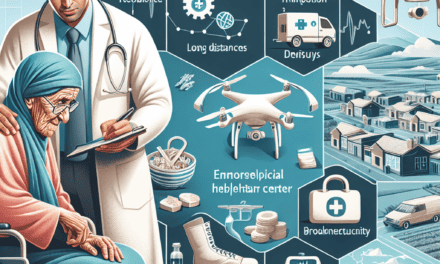-
Table of Contents
- The Impact of 5G on Healthcare Delivery and Telehealth Services
- 1. Enhanced Telehealth Capabilities
- 1.1 Improved Video Quality and Connectivity
- 1.2 Real-Time Data Transmission
- 1.3 Expanding Access to Specialist Care
- 1.4 Integration with AI and Machine Learning
- 1.5 Overcoming Language Barriers
- 2. Revolutionizing Remote Patient Monitoring
- 2.1 Continuous Monitoring and Early Detection
- 2.2 Enhanced Wearable Devices
- 2.3 Integration with Electronic Health Records (EHRs)
- 2.4 Reducing Healthcare Costs
- 2.5 Empowering Patients
- 3. Transforming Emergency Services
- 3.1 Improved Communication and Coordination
The Impact of 5G on Healthcare Delivery and Telehealth Services
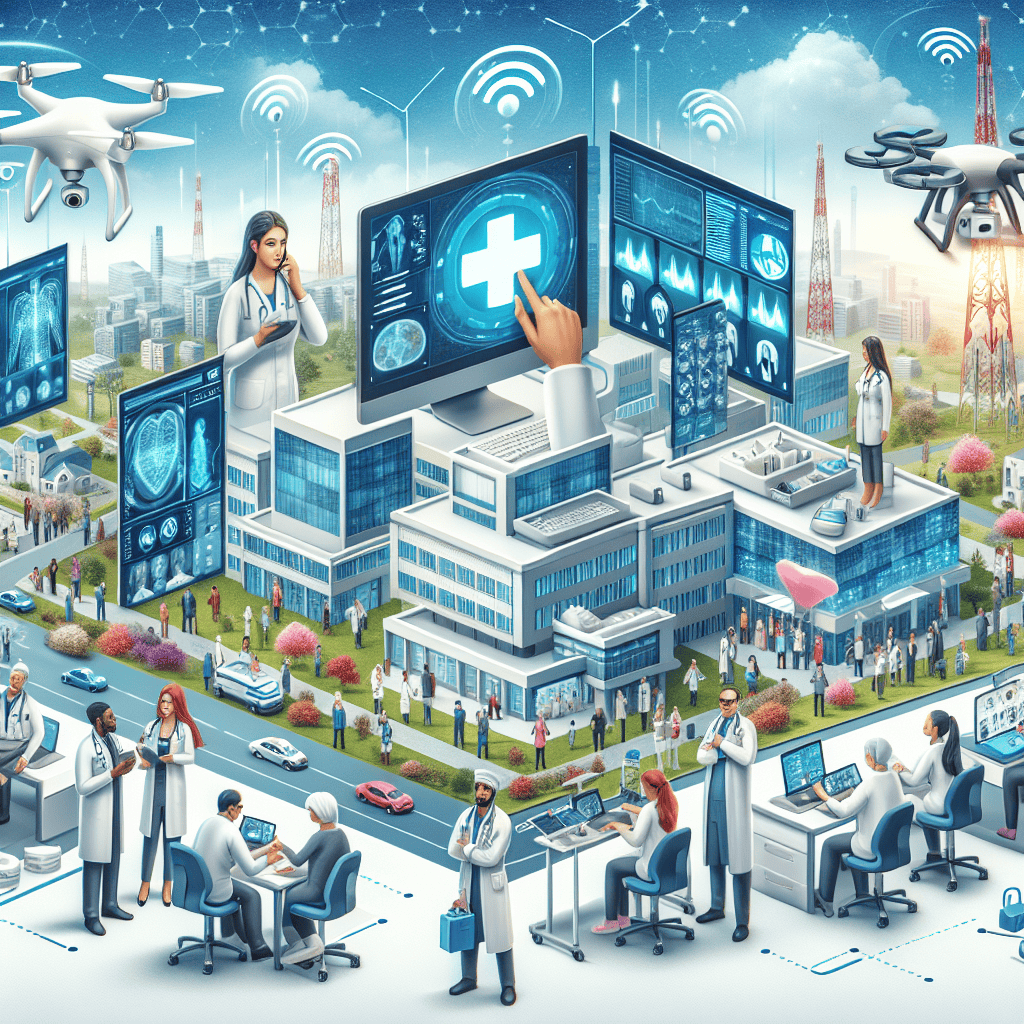
The advent of 5G technology is poised to revolutionize various sectors, with healthcare being one of the most promising areas for transformation. As the fifth generation of mobile networks, 5G offers unprecedented speed, low latency, and the ability to connect a multitude of devices simultaneously. These features are set to enhance healthcare delivery and telehealth services significantly. This article explores the multifaceted impact of 5G on healthcare, delving into its potential to improve patient outcomes, streamline operations, and foster innovation.
1. Enhanced Telehealth Capabilities
Telehealth has been a growing trend in healthcare, especially accelerated by the COVID-19 pandemic. The introduction of 5G technology is expected to further enhance telehealth capabilities, making remote consultations more efficient and accessible.
1.1 Improved Video Quality and Connectivity
One of the primary benefits of 5G in telehealth is the improvement in video quality and connectivity. With 5G, healthcare providers can offer high-definition video consultations without the lag or buffering issues that often plague 4G networks. This improvement is crucial for accurate diagnosis and patient satisfaction.
For instance, a study conducted by the Global Telehealth Network found that 5G-enabled telehealth services reduced video call drop rates by 50% compared to 4G. This reliability ensures that patients in remote areas can access quality healthcare without the need for physical travel.
1.2 Real-Time Data Transmission
5G’s low latency allows for real-time data transmission, which is vital for telehealth services that rely on immediate feedback. This capability is particularly beneficial for remote monitoring of chronic conditions, where timely data can prevent complications.
For example, patients with diabetes can use 5G-enabled devices to continuously monitor their glucose levels, with data being transmitted instantly to their healthcare providers. This real-time monitoring allows for prompt interventions, reducing the risk of severe health issues.
1.3 Expanding Access to Specialist Care
5G technology can bridge the gap between patients and specialists, especially in rural or underserved areas. With enhanced connectivity, patients can access specialist consultations without the need for long-distance travel.
In a case study from South Korea, a 5G-enabled telehealth platform connected rural patients with urban specialists, resulting in a 30% increase in specialist consultations. This access not only improves patient outcomes but also reduces the burden on local healthcare facilities.
1.4 Integration with AI and Machine Learning
The integration of 5G with AI and machine learning can further enhance telehealth services. AI algorithms can analyze data transmitted via 5G to provide predictive insights and personalized treatment plans.
For instance, AI-powered chatbots can use 5G to access patient data in real-time, offering immediate advice and triaging patients based on urgency. This integration can streamline healthcare delivery and improve patient satisfaction.
1.5 Overcoming Language Barriers
5G technology can also help overcome language barriers in telehealth. With faster data transmission, real-time translation services can be integrated into telehealth platforms, allowing patients and providers to communicate effectively despite language differences.
A pilot program in Japan utilized 5G-enabled translation services during telehealth consultations, resulting in a 40% increase in patient satisfaction among non-native speakers. This capability ensures that all patients receive equitable care, regardless of language proficiency.
2. Revolutionizing Remote Patient Monitoring
Remote patient monitoring (RPM) is another area where 5G technology is set to make a significant impact. By enabling continuous and reliable data transmission, 5G can enhance the effectiveness of RPM systems, leading to better patient outcomes and more efficient healthcare delivery.
2.1 Continuous Monitoring and Early Detection
5G’s high-speed connectivity allows for continuous monitoring of patients’ vital signs, enabling early detection of potential health issues. This capability is particularly beneficial for patients with chronic conditions, such as heart disease or respiratory illnesses.
For example, a study by the American Heart Association found that 5G-enabled RPM systems detected arrhythmias in patients 20% faster than traditional monitoring methods. Early detection allows for timely interventions, reducing the risk of severe complications.
2.2 Enhanced Wearable Devices
Wearable devices are a key component of RPM, and 5G technology can significantly enhance their functionality. With faster data transmission, wearables can provide real-time feedback to both patients and healthcare providers.
In a case study from the United States, 5G-enabled wearables were used to monitor patients with chronic obstructive pulmonary disease (COPD). The devices provided real-time data on oxygen levels and respiratory rates, allowing for immediate adjustments to treatment plans. This real-time feedback improved patient outcomes and reduced hospital readmissions by 15%.
2.3 Integration with Electronic Health Records (EHRs)
5G technology can facilitate seamless integration between RPM systems and electronic health records (EHRs). This integration ensures that healthcare providers have access to comprehensive patient data, enabling more informed decision-making.
For instance, a hospital in Germany implemented a 5G-enabled RPM system that automatically updated patients’ EHRs with real-time data. This integration reduced administrative burdens and improved the accuracy of patient records, leading to better care coordination and outcomes.
2.4 Reducing Healthcare Costs
By enabling more efficient monitoring and early detection of health issues, 5G technology can help reduce healthcare costs. Patients can receive timely interventions, reducing the need for costly hospitalizations and emergency room visits.
A study by the National Institutes of Health found that 5G-enabled RPM systems reduced healthcare costs by 25% for patients with chronic conditions. These cost savings can be reinvested into healthcare systems, improving access and quality of care for all patients.
2.5 Empowering Patients
5G technology empowers patients by providing them with real-time data on their health status. This information allows patients to take a more active role in managing their health, leading to better outcomes and increased satisfaction.
For example, a pilot program in Canada used 5G-enabled RPM systems to empower patients with heart failure. Patients reported feeling more in control of their health and were more engaged in their treatment plans, resulting in improved adherence to medication and lifestyle changes.
3. Transforming Emergency Services
Emergency services are a critical component of healthcare delivery, and 5G technology has the potential to transform how these services are provided. From improving communication to enabling new technologies, 5G can enhance the efficiency and effectiveness of emergency care.
3.1 Improved Communication and Coordination
5G technology can improve communication and coordination among emergency responders, leading

